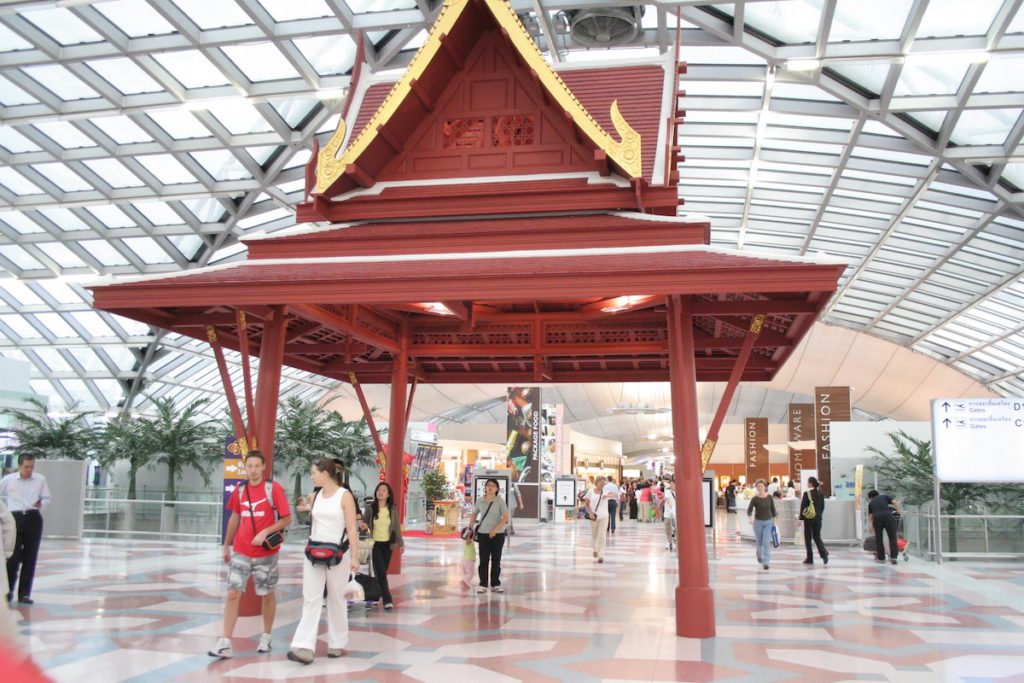
Skift Take
As Thailand embarks on this transformation, it would be interesting to watch how it navigates the challenges and opportunities that come with becoming an aviation powerhouse.
Thailand is looking to streamline its air travel experience. Beginning Friday, domestic travelers would be able to breeze through airport checkpoints through Thailand’s new biometric facial recognition system. By December 1, this technology is expected to be extended to international travelers, helping them bypass traditional ID checks throughout their journey.
This service will be debuting at 6 major airports in the country, including Suvarnabhumi, Don Mueang, Chiang Mai, Mae Fah Luang Chiang Rai, Phuket, and Hat Yai airports.
The concept is similar to DigiYatra, India’s airport entry system that uses facial recognition. However, in India it is yet to be implemented for international travel.
Through this, Thailand’s aviation authority — Airports of Thailand (AOT) said it looks to modernize its aviation infrastructure, cut processing times, and improve the overall passenger experience.
The Digitization Push
Talking about this initiative, AOT President Kirati Kitmanawat, said, “We are committed to modernizing facilities to meet passengers’ demand and offer impressive travel experiences.”
Kitmanawat said he expects this would reduce the time travelers spend on personal identity verification, allowing them to explore the airports more.
Addressing privacy concerns, it has been highlighted that the system would collect passengers’ biometric data and travel itineraries, but every registration would only be used per journey.
“The efforts to improve the passenger experience with technology will deliver their best if they are aligned with global initiatives to modernize processes. These include adoption of One ID standards to implement digital identity in the passenger journey and One Record to streamline cargo processes,” Xie Xingquan, IATA’s regional vice president for North Asia and Asia-Pacific, said in a statement this week.
Thailand’s Aviation Surge
The post-pandemic rebound has been strong for Thailand. Passenger numbers at 6 major airports reached 119.3 million — a 19% annual increase between October 2023 and September 2024.
These included 72.7 million international passengers and 46.6 million domestic passengers.
Airports in the country saw over 732,690 flights during this period, split between international and domestic routes, with numbers projected to grow as the country anticipates almost 130 million passengers next year.
The top source markets by air — China, India, South Korea, Russia, and Japan — highlight Thailand’s tourism appeal for both leisure and business travel.
Xingquan called Thailand’s potential in aviation “bright,” citing a projected compound annual growth rate of nearly 4% over the next 20 years. “Demand has reached 88% of 2019 levels, and we can expect real growth from 2025,” he noted, adding that tourism, crucial to Thailand’s economy, relies heavily on air travel. Almost 84% of visitors to the country arrive by air.
To accommodate this surge, Thailand has been investing heavily in infrastructure. The recent opening of Suvarnabhumi Airport’s third runway aims to help meet the government’s goal of managing a million flights annually. But it has been argued that more is needed.
Deputy Transport Minister Manaporn Charoensri has also advocated for six additional airports to meet future demands.
“A revised master plan for Thailand’s airport capacity is critical to delivering the economic benefits of aviation,” said Xingquan. He urged the government to consult closely with airlines to ensure new infrastructure aligns with market demand.
Call to Reduce Taxes
While Thailand continues to expand its aviation infrastructure, the question of affordability looms. Xingquan cautioned against raising taxes on aviation, especially at a time when the sector is poised for recovery and growth. Instead, he recommended reducing costs to encourage inbound travel. “Nurturing tourism should be a priority. A low tax burden is key to securing Thailand’s leading position in Asia in the tourism and MICE (Meetings, Incentives, Conferences, and Exhibitions) sectors and to strengthening the Bangkok hub,” he argued.
Maintaining competitive travel costs could be pivotal to boosting Thailand’s tourism industry, especially amid intense competition from nearby markets.
